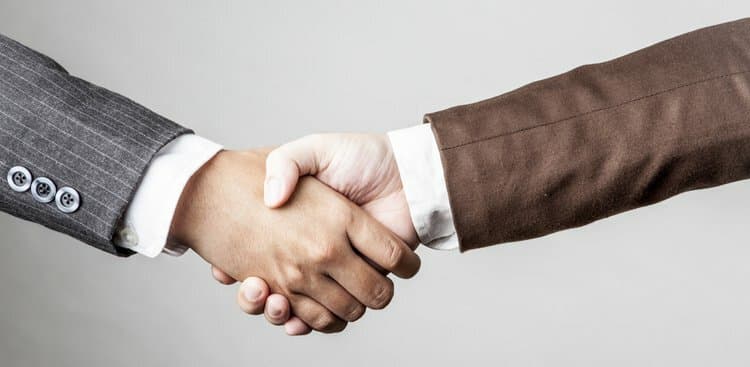If the title of this article doesn’t remind you of sparkly spandex and leg warmers, that’s great. Me neither—ahem. But all 80s pop references aside, how often do you think about physical contact in the office?
My own reaction to the word “physical” elicits images of sordid inter-office romance and testosterone-fueled fist fights. And while I’m sure this type of physical contact can and does occur, what’s much more frequent—and nearly as challenging to navigate—is the plain, innocent contact you make with your colleagues or clients every day.
When I started my first job, I was intensely paranoid about any physical contact whatsoever, thanks to a session or two of “sensitivity training” (aka sexual harassment training). In an attempt to ensure that no one could possibly be put in an uncomfortable or offensive situation, our staff was essentially trained to adhere to a strict no-contact policy (shaking hands being the obvious exception).
As a result, I had no instinct or sense for what else may be appropriate in business situations. For example, when meeting up with colleagues for happy hour, I stood, awkwardly holding out my hand as my boss went in for a European-style greeting. Embarrassing much? After that, I vowed to pay more attention to the various levels of physical contact my peers favored, both in the office and off-site.
After a few years of practice, I was pretty sure I had it down. I was moving up in my career and had a strong base of clients and colleagues with whom I felt comfortable sharing the occasional hug, pat on the back, or yes, even the European-style greeting.
That over-confidence should have been my clue to watch out (you know the saying, “pride before the fall”?). I was invited on a business trip with two senior colleagues to visit a client. As a junior member of the firm, I normally wouldn’t have gone along, but I had a close relationship with the client, and she requested that I attend.
Too thrilled (and admittedly, a little too cocky) that I had been invited, I made a critical mistake. We visited the client at her home, and I was the first to greet her. This being our first in-person meeting, we both smiled as we met. I (clearly) felt very comfortable and, without thinking, went in for—wait for it—the Euro hug! Her body immediately stiffened, and I knew I’d made a terrible mistake.
After all my years observing various customs and becoming comfortable with my own level of physical interactions, I never stopped to refresh myself on my clients’ level of touch-comfort. Although no one said anything to me at the meeting, one of the senior members did pull me aside a few weeks later to correct my gaffe. To this day, I still feel sick to my stomach when I think of the incident.
The lesson I learned: Every person and every situation is different. While it’s tempting (and easier) to generalize certain encounters and people to fit a canned response—handshakes for your clients, high-fives or hugs for your close colleagues—the reality is, there’s no way you can know for certain how comfortable other people are with physical contact.
So, as much as I hate to admit it, the very first rule I learned—handshakes only—turns out to be a graceful, genuine, and appropriate response to nearly any situation.
The beauty in the handshake is its simplicity. With just a brief gesture, you can convey confidence, respect, and likability. Plus, by initiating with the most conservative gesture, you leave the other party in control of how to proceed in the manner that makes them feel most comfortable. Of course, you’ll inevitably encounter the awkward hugger (guilty!), but in most situations, people will take the hint, and your hand.

